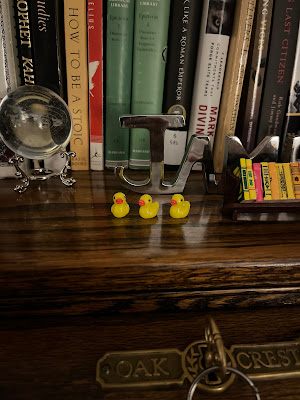La Vie Boheme?
I watched two movies that have nothing to do with each other; yet, they both tell the same story. I refer to “Rent” and “The Lion in Winter.” Both were first-time viewings for me. I n case you are wondering where I’ve been, I am not one to rush out and see movies during their hype. I like to let the dust settle so I may digest the event without distraction from the hoopla.
Both movies were remakes of their original. “Rent” (2005) is a direct translation of Puccini’s 1896 opera, “La Boheme.” The story is of the cold, of love and hate, of life and death through the eyes of starving artists in the ghetto. “The Lion in Winter” (2003), starring Patrick Steward and Glenn Close, was a bold remake of the 1968 Hepburn/O’Tool film, which tells the story of King Henry II, of cold, of love and hate, of life and death through the eyes of regal villains scratching for the throne during the 1180’s Britain. This story has been told and retold by Shakespeare (“King John” and subsequent “King Henry” plays) and countless other historians, though eloquently recorded by Winston Churchill (also known as “the last Lion” himself) in the first of his 4-part book series, “History of the English Speaking People.”
Both stories are of bohemianism; that is, both describe the plight of disenchanted people who wished to live non-traditional lifestyles. Old Solomon was right when he said there was nothing new under the sun, and both stories could have the tagline, “No day but today.” While one story counted out five hundred twenty-five thousand six hundred minutes to, in a sense, take a head-count to see who survived, the other story counted out five hundred twenty-five thousand six hundred minutes to see who would be next to go. In “Lion”, the victor gets the spoils. In “Rent”, the victor goes to the spoils.
Both “Rent” and “The Lion in Winter” take place in over Christmas, and in their metropolitan centers. Both concern themselves heavily with “love” and the consequences of abusing it. Both show people living in fear. Both include the theme of homosexuality (Prince Richard/Prince Philip, Tom/Angel and Maureen/Joanne) as a crucial factor in the plots.
The comparisons are uncanny.
King Henry II and Mark/Marcello are despairing, yet want to make a mark in history;
Queen Eleanor and Maureen/Musetta will do whatever it takes to get them on the top and still maintain their eccentric tastes;
Prince John and Angel are the “freaks”, but both are held in highest esteem with their “families,” despite their flaws;
Prince Geoffry and Roger are the “machines,” just plodding along through life with hopes that everything works out for themselves (and if others are helped, that’s great, too);
Prince Richard and Tom Collins are the “go-getters,” working hard and even fighting for what those around them to the fault that they loose sight of that which is closest to them;
Prince Henry and April never appear because they both are dead before the story actually begins, but the impact of their lives affect their families and are never forgotten;
Alais and Mimi are must like innocent bystanders, but both are the key-stone to tragedy: used and user, loved and unloved. Both are openly known to practice unmarried sexual relations.
And the list goes on.
I feel like I’ve been on a roller-coaster ride with only one direction: straight down.
The tragedy is that people really live like this . . .

